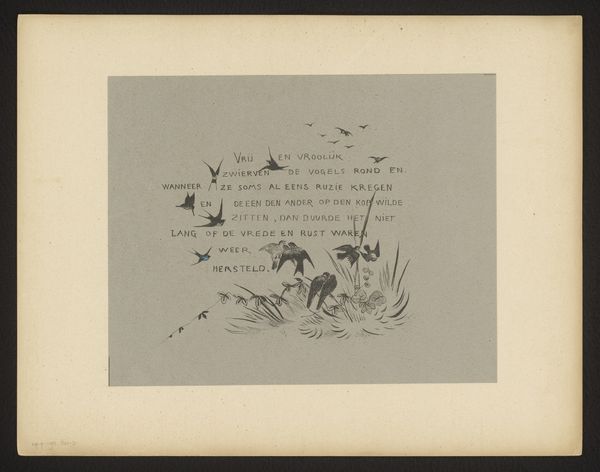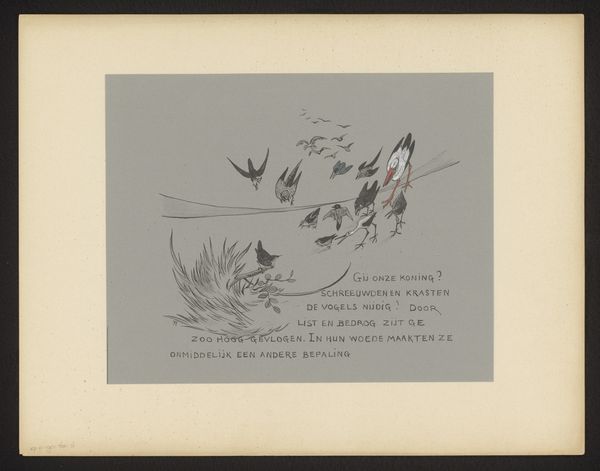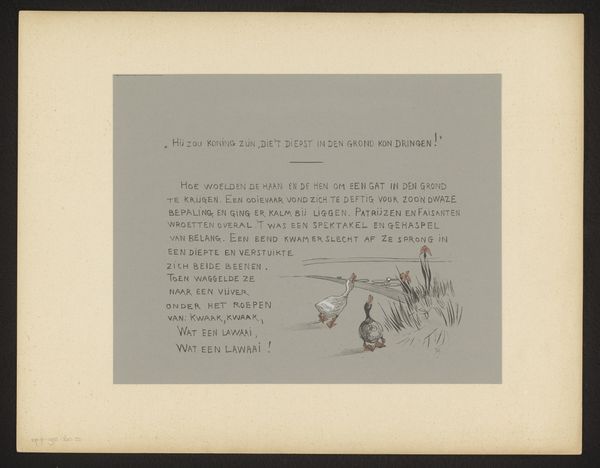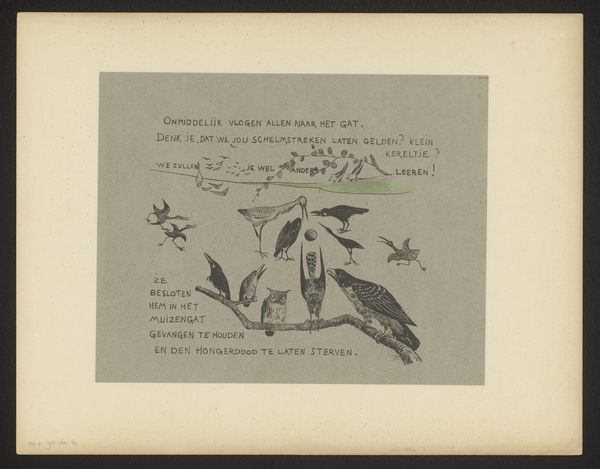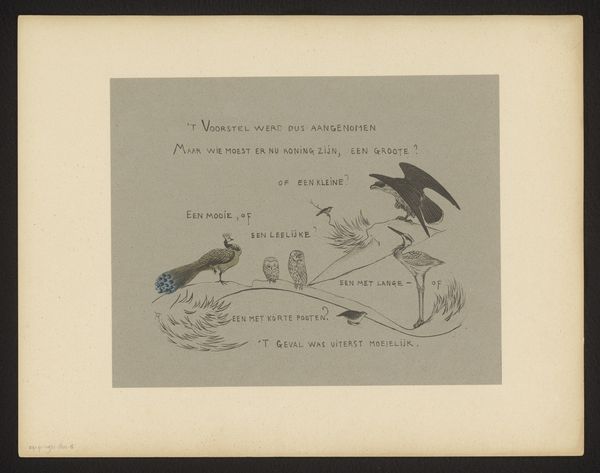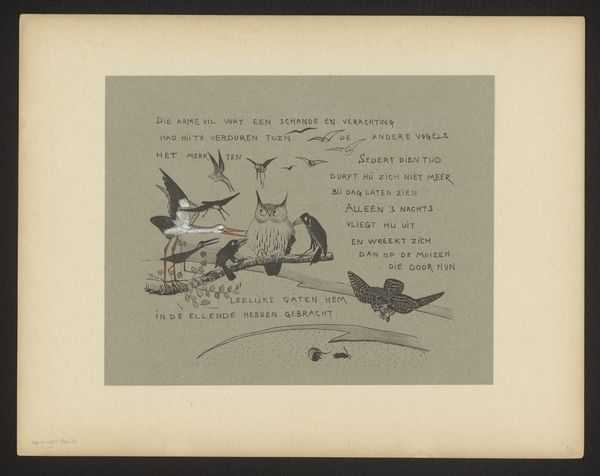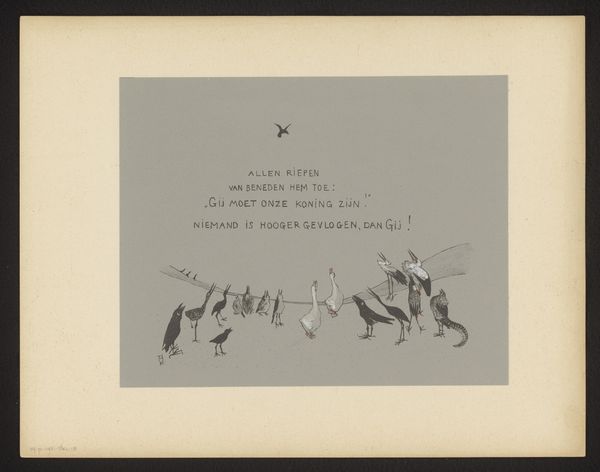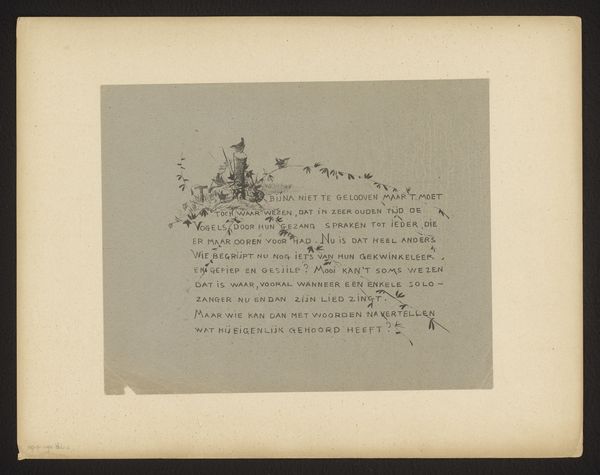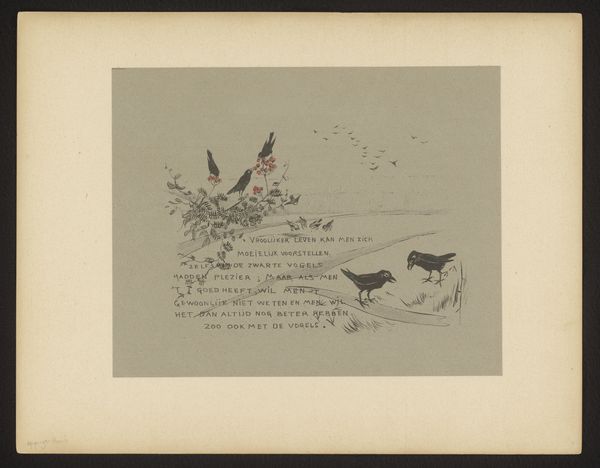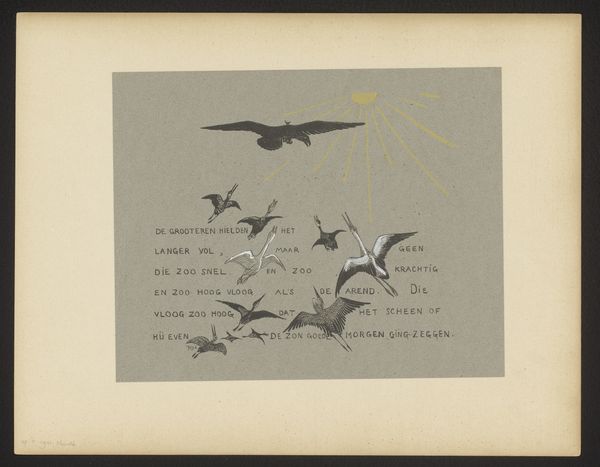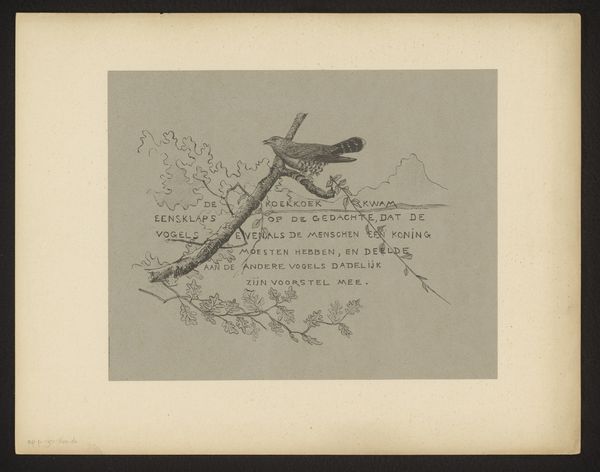
drawing, graphic-art, print, paper, ink
#
drawing
#
graphic-art
#
art-nouveau
#
ink paper printed
# print
#
paper
#
ink
Dimensions: height 224 mm, width 281 mm, height 319 mm, width 408 mm
Copyright: Rijks Museum: Open Domain
Curator: This is "Tekstblad met kieviten," or "Text Sheet with Lapwings," created in 1892 by Theo van Hoytema. It combines drawing and printmaking on paper, primarily using ink. Editor: My first thought is how haunting the image is. There is an understated beauty to the monochrome design, but it carries such heavy overtones with that lonely text block and stark birds. Curator: I appreciate that observation. Van Hoytema was very involved in the socio-political contexts of his time, even engaging with anarchist ideals and using art as social critique. It may be easy to overlook the piece as just an illustration of birds with accompanying text, but, within a particular cultural framework, this image becomes charged. Editor: Precisely. The inclusion of written text makes me think of issues of accessibility and communication, especially given the socio-economic contexts of the time and who the text actually speaks to, and for. The choice to make these lapwings so ominous seems to reinforce these sociopolitical tensions. They are flying, free in nature, but grounded by written word? It speaks to limitations and barriers... Curator: Indeed. Van Hoytema's work frequently engaged with themes of nature and freedom, but was equally influenced by emerging socialist and anarchist ideas in the Netherlands. These movements hoped to redefine concepts such as free expression, labor and even art. Editor: So even in his imagery we could assume an almost paradoxical, perhaps dialectical commentary on freedom – freedom in the image but perhaps, through our knowledge, a knowing limitation of those very themes and concepts. Curator: Yes, the work’s very public location within the Rijksmuseum brings with it an institutional endorsement that could not have been anticipated in Van Hoytema’s original moment of production. This is further magnified by the historical and continuing power structures around nature as an art form as we, as people in modern society, engage with ecological problems like habitat loss. Editor: Absolutely, understanding these dualities brings more depth to this piece of graphic art, which has surprising cultural impact in today's conversations around class and political action. Curator: By examining it, we see it isn't just a sheet with birds. The imagery is indicative of its place in socio-political movements that might otherwise go unseen today.
Comments
No comments
Be the first to comment and join the conversation on the ultimate creative platform.
